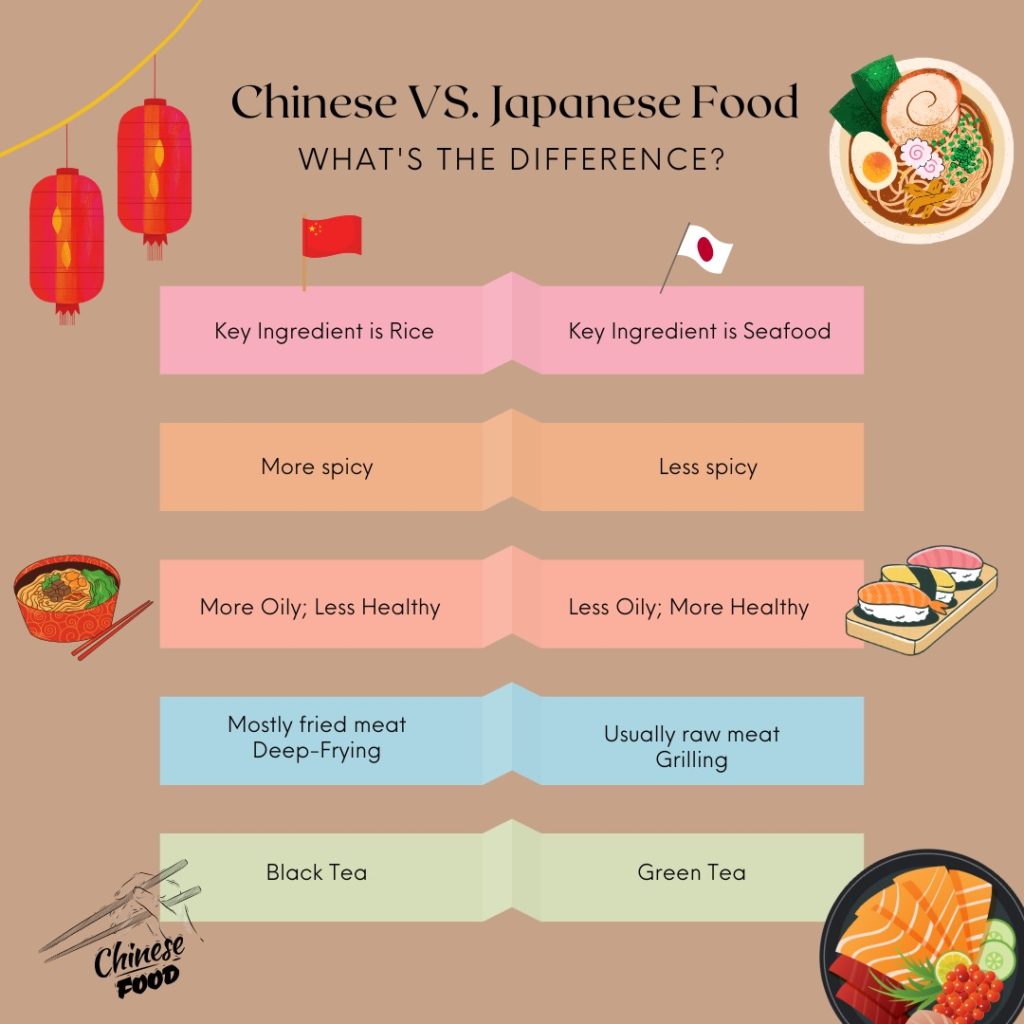Chinese and Japanese cuisine share similarities in their complex flavors, unique ingredients and artful presentation, but each has distinct features shaped by cultural and historical backgrounds. Chinese cuisine emphasizes bold, savory flavors with ingredients such as garlic, ginger, soy sauce and rice wine, while Japanese cuisine tends to be milder with an emphasis on simple, elegant flavors like umami, seaweed and mirin. The types of noodles, cooking techniques and dining customs differ between the two countries as well. Both Chinese and Japanese cuisine have their own popular dishes with unique tastes, ingredients and preparation methods. Overall, the culinary traditions of East Asia are diverse and rich in history and culture.
Chinese vs. Japanese Cuisine: East Asian Eats
The culinary traditions of China and Japan are both known for their complex flavors, unique ingredients, and artful presentation. However, despite sharing certain similarities, Chinese and Japanese cuisine have many distinctive features that reflect their cultural and historical backgrounds. In this article, we will compare and contrast some of the key differences between Chinese and Japanese cuisine, exploring everything from ingredients and cooking methods to dining etiquette and popular dishes.
Ingredients and Flavors
The first thing to note when comparing Chinese and Japanese cuisine is that both have distinctive ingredients and flavors. Chinese cooking is renowned for its use of bold, savory flavors, often achieved through the use of ingredients such as garlic, ginger, soy sauce, and rice wine. In contrast, Japanese cuisine tends to be milder, with an emphasis on simple, elegant flavors such as umami, the distinctive taste of seaweed, and the subtle sweetness of mirin.
Both cuisines also share some common ingredients, such as rice and noodles. However, the types of noodles used in each cuisine are different. Chinese cuisine relies heavily on wheat noodles, which are often served stir-fried or in soup dishes. Japanese cuisine, on the other hand, favors soba and udon noodles, typically served in soup dishes or cold with dipping sauces.
Cooking Techniques
Another key difference between Chinese and Japanese cuisine lies in their respective cooking techniques. Chinese cuisine is known for its use of a wide variety of spices and cooking methods, including stir-frying, deep-frying, and braising. In contrast, Japanese cuisine tends to favor simpler cooking techniques, such as grilling, steaming, and simmering.
One of the most iconic Japanese cooking techniques is sushi, which involves combining raw fish, vegetables, and other ingredients with vinegared rice. Chinese cuisine, on the other hand, is known for its use of dumplings, which are traditionally filled with meats, vegetables, and spices, and then boiled, steamed, or fried.
Dining Customs
In addition to their different culinary traditions, China and Japan also have distinct dining customs. In Japan, for example, it is customary to remove one’s shoes before entering a restaurant or home. Dining in Japan is often a communal experience, with dishes served family-style and shared among the diners.
In China, on the other hand, it is common for each person to order their own dish, which is then shared among the group. Additionally, it is customary to use chopsticks rather than a fork and knife when eating Chinese cuisine.
Popular Dishes
Finally, let’s take a closer look at some of the most popular dishes in Chinese and Japanese cuisine, respectively. In China, some of the most famous dishes include hot pot, kung pao chicken, and xiaolongbao (steamed dumplings). Japanese cuisine, on the other hand, is known for dishes such as ramen, sushi, and tempura.
Of course, both cuisines have many other popular dishes, each with their own unique tastes, ingredients, and preparation methods. Ultimately, the differences between Chinese and Japanese cuisine reflect not only the distinctive flavors and traditions of each country but also the rich history and cultural heritage that underpin their culinary creations.
Conclusion
In conclusion, both Chinese and Japanese cuisine are renowned for their complex flavors, unique ingredients, and artful presentation. However, despite some shared elements, the two cuisines have many distinctive features that set them apart. By exploring the differences in ingredients, cooking techniques, dining customs, and popular dishes, we gain a deeper appreciation for the rich and diverse culinary traditions of East Asia.
